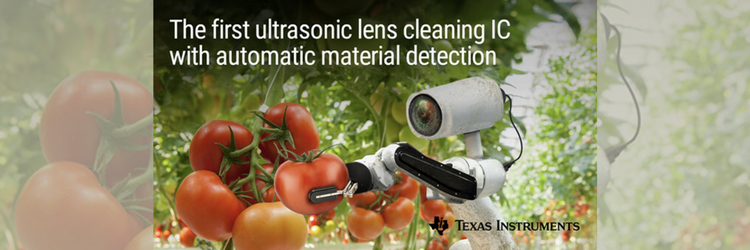Texas Instruments recently unveiled purpose-built semiconductors with ultrasonic lens cleaning (ULC) technology so that camera systems can quickly detect and remove dirt, ice, and water using microscopic vibrations—the first ultrasonic lens cleaning IC with automatic material detection.
Typically, we manually clean contaminants from camera lenses, causing system downtime or mechanical parts malfunctions. TI’s new ULC chipset, including the ULC1001 digital signal processor (DSP) and companion DRV2901 piezo transducer driver, relies on proprietary technology that allows cameras to rapidly eliminate debris, improving system accuracy and reducing maintenance. The chipset offers designers a compact and affordable way to use ULC in a wide range of applications and camera sizes.
ULC can make widespread use of self-cleaning cameras and sensors a reality, increasing camera usage from cell phones to drones, to sensors, to automotive applications.
The ULC1001 controller features proprietary algorithms for automatic sensing, cleaning, temperature, and fault detection without image processing, making ULC technology highly adaptable to a variety of lens designs. The small form factor makes it possible to improve machine vision and sensing in various applications.
TI’s ULC chipset eliminates the need for complex mechanical parts and human intervention in lens cleaning. The ULC1001 ultrasonic cleaning DSP integrates a pulse-width modulator, current- and voltage-sense amplifiers, and an analog-to-digital converter. Combined with the DRV2901 piezo transducer driver as a companion amplifier, the TI chipset enables ULC with a printed circuit board size of less than 25 mm by 15 mm, reducing the bill of materials and adding functionality.

